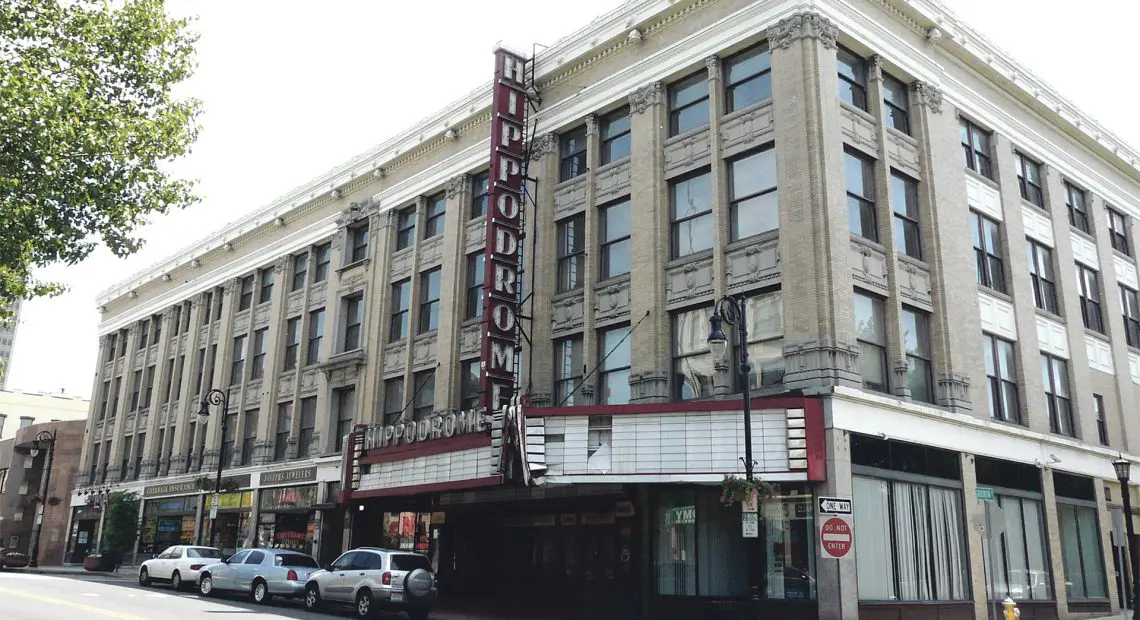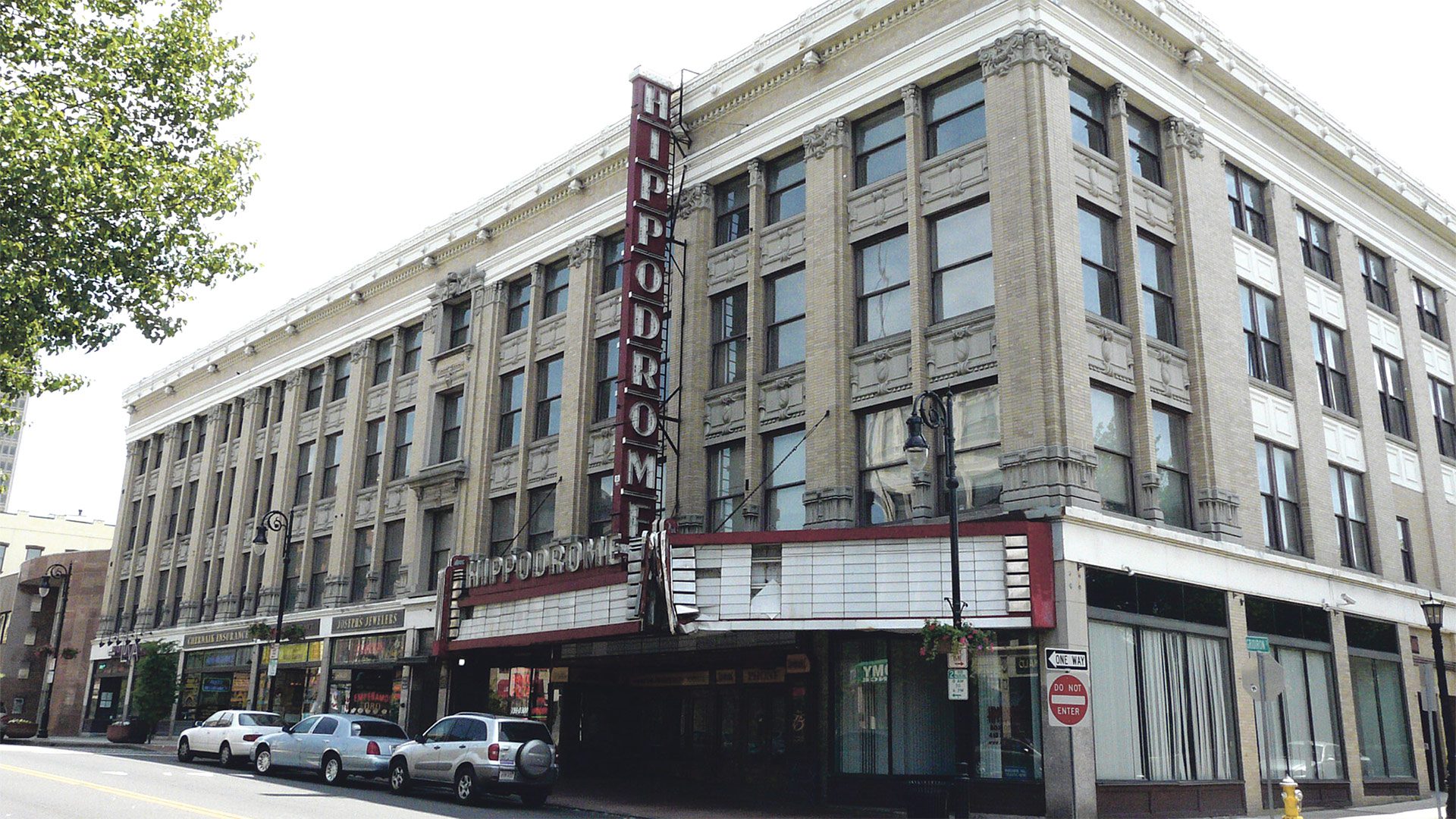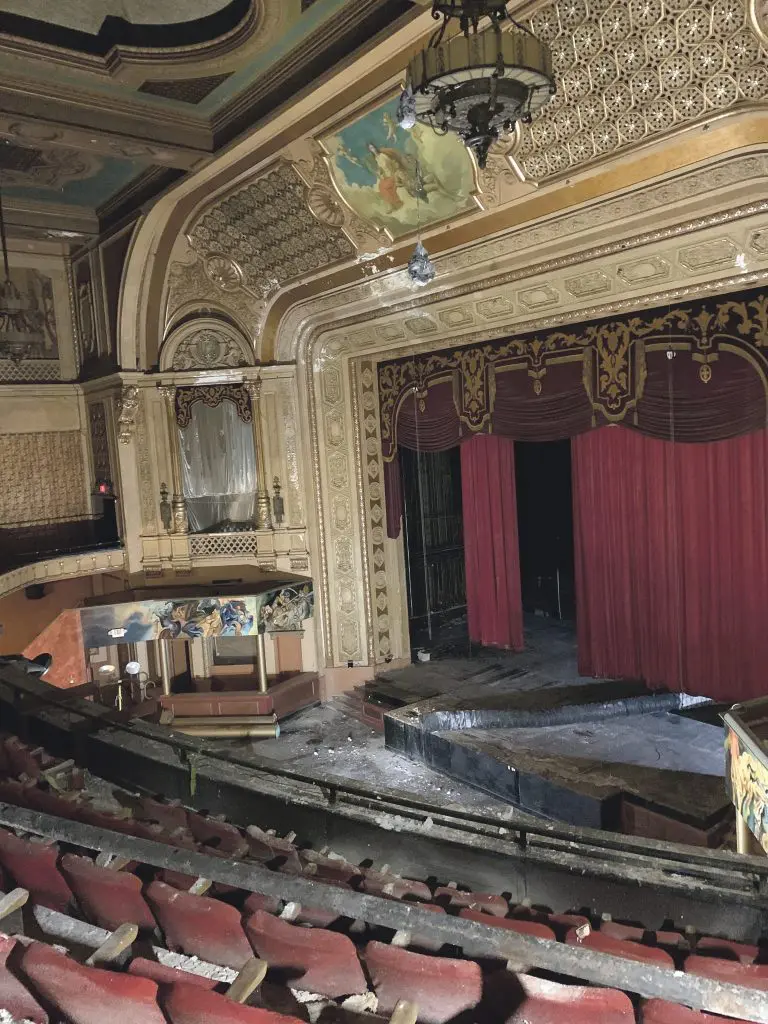
Upcoming Auction May Decide Fate of Springfield Landmark
Of Paramount Importance

Paramount Theater
Over the past year or so, while the historic Paramount Theater property in Springfield has somewhat quietly been on the market, Bill Low has taken more than a dozen interested parties through the landmark.
Slicing through the comments made by those taking the tour, he said he’s counted quite a few people saying “what a shame,” or “it’s really sad,” as they view the theater portion of the property — which has hosted shows by the likes of Jerry Seinfeld, the Three Stooges, and Bob Dylan over the years — and the many visible forms of deterioration there.
He’s also heard several of these visitors talk about how, while renovation of the former Massasoit House Hotel portion of the property is likely doable, the theater is … well, another story.
“Over the past year, I probably had 12 to 15 physical tours,” said Low, president of Springfield-based L&P Commercial, which has been handling the sale of this and most other properties within a large portfolio of real estate once owned by the New England Farmworkers Council. “There was lots of interest, which I would expect because it’s a grand property. But when you think about the theater … what do you do with it? It’s beautiful, but what can you do with it?”
Such comments are in many ways helping to set the stage, figuratively but also literally, for what will be a closely watched auction of the Paramount property that was originally slated for mid-August and is now set for Sept. 23.
“There was lots of interest, which I would expect because it’s a grand property. But when you think about the theater … what do you do with it? It’s beautiful, but what can you do with it?”
Low, like Tim Sheehan, Springfield’s chief Development officer, says he doesn’t know exactly what to expect at the auction, to be conducted online by the national real-estate agency Crexi.
According to Crexi’s web page for the Paramount property, the starting bid will be $250,000. That’s roughly one-tenth of what it is assessed at and about one-seventh what the New England Farmworkers Council paid for it in 2011, with plans to author the next chapter in its history — plans that never materialized, due in part to COVID, but also to market conditions and the high degree of difficulty associated with the project.

The low initial bid price might be another indicator of just how complex and difficult a project this is, but Low also suspects it was set to “generate some action.”
And he believes there will be a good amount of action, but just what it will translate into remains to be seen. The theater portion of the property remains an extreme challenge, he said, not merely because of the high price tag (which has been prohibitive for many of the arts-related groups that have toured the property), but because of the need within the marketplace for another performance venue — or lack thereof.
Sheehan agreed.
“Everyone keeps talking about performance space, but how much performance space is a city the size of Springfield going to be able to support?” he asked rhetorically. “You have Symphony Hall, you have the MassMutual Center. You have MGM, with smaller venues … I’m just not certain you can get positive cash flow out of performance space of that size.”
But he noted that there are other projects in various stages of development in that area, including recently announced plans to convert the floors above the Student Prince Café and the Fort into condominiums (see related story on page 35), and the Paramount could be another building block on that section of Main Street and possible catalyst for still more development.
For this issue and its focus on commercial real estate, we look at how the upcoming auction has cast the Paramount property back into the spotlight, and also why this property with a rich past has so many question marks about its future.
Back in the Spotlight
The marketing language created by L&P Commercial for the Paramount property when it was on the market speaks to everything from its history and architectural significance to the challenges that await those who might want to take this on.
“This endeavor calls for dreamers, history enthusiasts, and architects of the future,” it reads. “Whether you envision a cultural center, boutique hotel, great thriving entertainment hub, this restoration project awaits your touch. Embrace your opportunity to make your mark on history while preserving the city’s rich history. Take the first step toward creating a lasting legacy.”
There has been little if any interest among those who have toured the property to take that first step, said Low, adding that this reality helps explains why the property is now going to auction.
“We just got to the point where we couldn’t find the right buyer,” he told BusinessWest. “It’s a massive undertaking; most of the interest was in the hotel, with people then saying, ‘now what do we do with the theater?’”
By now, most know at least some of the Paramount’s history. Opened in 1926, it was, for decades, all those things listed in the L&P description — a cultural center, thriving hotel, and entertainment hub. Four presidents are said to have stayed in the Massasoit House Hotel. As for the Paramount, formerly named the Julia Sanderson Theater, it has hosted movies and all kinds of live performances, from music to comedy to theater.

Bill Low expects the auction for the Paramount property to draw a good amount of interest.
Renovated in 1999 and renamed the Hippodrome, the property was purchased by the New England Farmworkers Council in 2011 with the intention of restoring it to its former glory. As a casino proposal came together involving real estate just north of the Arch, the Hippodrome was viewed as being a potential key component of such plans.
But the casino was ultimately built in the South End, less than a mile down Main Street, and plans to renovate the Paramount/Massasoit property — with a price tag around $40 million — were never realized.
COVID played a factor, but so did the inability to secure the private funding needed to advance the project to the construction phase, said Sheehan, adding that the Farmworkers Council, burdened with the various costs associated with the real estate, needed to relieve itself of that burden.
Which brings us to next month’s auction. Both Low and Sheehan said it will be “interesting.” Beyond that, they’re not entirely sure what to expect from whomever prevails in that event.
Show of Interest?
They do know that the new owner, whoever that might be, will face the same challenges that the New England Farmworkers Council had in renovating the theater portion of the property and making it viable from a business standpoint.
As Sheehan pointed out, there are several other performance venues in Springfield and elsewhere in the region. Meanwhile, those involved with plans to renovate another historic old movie house — the Victory Theater in Holyoke — are trying to close a funding gap and move forward with 45-year-old efforts to restore that landmark.
That said, he noted that some developers have reached out to him to have discussions about the property and float potential development concepts.
“Hopefully, they’ll show up at the auction and at least gauge a level of interest associated with the properties,” he went on, noting that the decision to take the property to auction has come about rather quickly, so potentially interested parties have not had much time to do their due diligence.
Sheehan said that, if he has a suggestion, or cautionary note, for potential developers of the property, it would be to take on this project in stages.
“I think they should work with scalable pieces of the overall development and begin in the easiest spot that you possibly can,” he said, adding that this spot would likely be the ground-floor retail spaces on the property.
Meanwhile, redevelopment of the Massasoit House Hotel might be the next spot.
“The office component in the former hotel … that won’t be as difficult an undertaking,” he noted. “The really hard part is the Paramount itself; what are you envisioning for the redevelopment of that space that will actually bring positive economics to the overall equation?”
Both the theater and hotel are listed on the National Register of Historic Places, Sheehan noted, adding that the site is significant from both a historic and architectural standpoint, and this needs to factor into happens next, whatever it is.
“Both of those properties have significant historical importance and architectural significance,” he said. “And the city has an interest in making sure that those properties are reactivated and preserved in an appropriate way.”
Low acknowledged the historic nature of the property and the architectural significance, but wondered out loud if something might have to give from a preservation standpoint if something is to happen at this property.
Meanwhile, his only predictions for the auction, based on the interest shown since Crexi started marketing it, are a sale price above (probably well above) $250,000, and “lots of action.”
And maybe, just maybe, from that action, progress will be made in securing a future for this big slice of the city’s past.
Fort Building’s New Owners Plan Condo Development
 Peter Picknelly says he and other members of an investment group that recently acquired the property on Main Street in Springfield that is home to the Student Prince Café and the Fort did so to essentially control their own destiny.
Peter Picknelly says he and other members of an investment group that recently acquired the property on Main Street in Springfield that is home to the Student Prince Café and the Fort did so to essentially control their own destiny.
Indeed, this same group, which includes Picknelly, chairman of Peter Pan Bus Lines and a principal with OPAL Real Estate Group; the Yee family; and Michael and Kevin Vann, acquired the restaurant in 2014 with the intention of preserving it for future generations of area residents. And as they embark on a series of renovations to the famous restaurant, they understood that their overall path would be easier to negotiate if they owned the property.
But their motivations certainly don’t end there. The new owners have ambitious plans to renovate the long-vacant upper floors of the property into 50 or more condominiums, which Picknelly anticipates will fall into the ‘affordable’ category.
As he talked about these plans, he drew a number of similarities between the Fort building, as it’s known to many, and another project he recently led — conversion of 31 Elm St., the former Court Square Hotel, into mostly market-rate housing units.
Both buildings are historic, to one degree or another (31 Elm St. is on the National Register of Historic places, while the Fort building is not), both have been vacant or mostly vacant for decades, and both are “bears,” as Picknelly put it, when it comes to the many challenges associated with reimagining them as housing.
“But 31 Elm was more of a bear,” he said with a laugh, adding that, while the upper floors of the Fort building do, indeed, present a number of construction and financing challenges — he expects this project will cost $25 million to $30 million — he described it as certainly doable.
“This building is a lot like 31 Elm — it has great bones, but it’s been left to decay for decades,” he explained, noting that the ownership group will work with Winn Development, another partner on 31 Elm, on the Fort Building initiative. “It certainly comes with a challenge, but we’ve teamed up with Winn, who I think are masters at renovating old structures like that and modernizing them and making them great places to live and work.”
Meanwhile, the runaway success of 31 Elm — the building was fully leased when it opened, and there is already a lengthy waiting list — provides both inspiration for the Fort building endeavor and proof of need for this kind of development.
“I think the success of 31 Elm has certainly demonstrated that people want to live in downtown Springfield,” said Picknelly, adding that, just as the Court Square project has injected vibrancy into downtown, the Fort building project can do the same, especially for that section of Main Street.
“I hoping that this serves as a catalyst for further development toward the North End,” he said. “I think that’s the natural course of progress for our city.”
The new ownership group, known as Fort Street Realty Assoc., acquired the property from the New England Farmworkers Council, which has been selling off its portfolio of real estate over the past year or so. The Farmworkers Council acquired the Fort building in 2011 with the intention of renovating the vacant upper floors, but those plans never materialized.
The property, which has been on the market for some time and listed for $2 million, sold for $700,000, an indication of the Farmworkers Council’s willingness to shed properties and get out from under heavy tax and property-maintenance burdens.
Picknelly said the new ownership group has several priorities for the property, including improvements to the restaurant (work in the kitchen, bathrooms, and other areas), efforts to clean up and shore up the “streetscape,” as he called the storefronts along Main Street, and conversion of the upper floors into condos.
—George O’Brien





